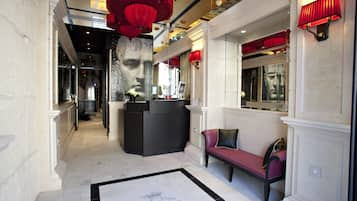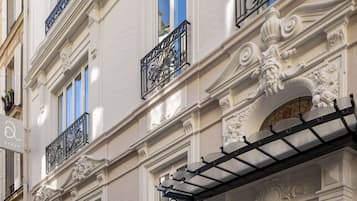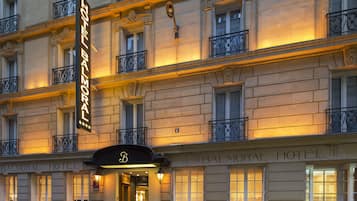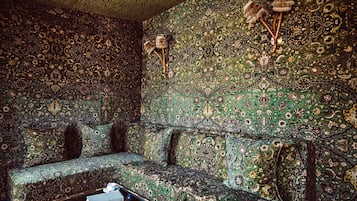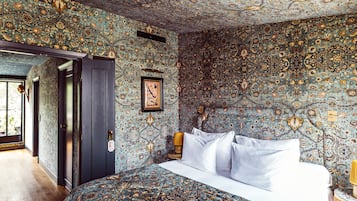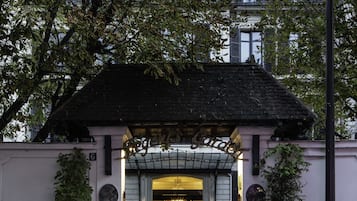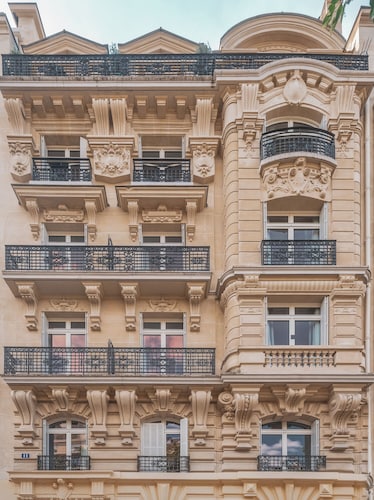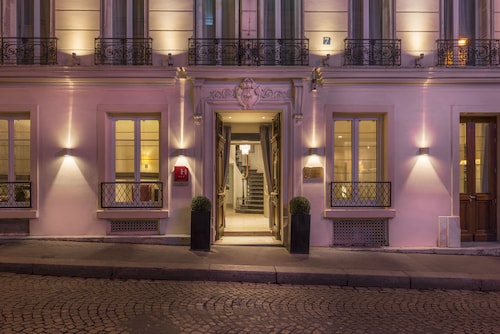Hoteles en XVII Distrito
Opciones de cancelación gratuita si cambias de planes
Acumula recompensas por cada noche de estancia
Ahorra más con los Precios para socios
Consulta precios para estas fechas
Esta noche
Mañana
Este fin de semana
El próximo fin de semana
Dónde hospedarse en XVII Distrito
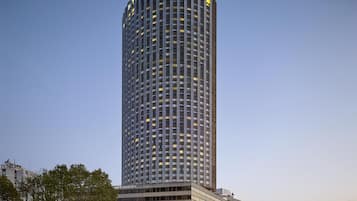
9.2 de 10, Magnífico, (1006)
El precio actual es de USD 212
USD 253 en total
impuestos y cargos incluidos
8 ene. - 9 de enero de 2026
Precio por noche más bajo encontrado en las últimas 24 horas para una estadía de una noche para dos adultos. Los precios y la disponibilidad están sujetos a cambios. Es posible que se apliquen más términos y condiciones.
Principales lugares de interés en XVII Distrito
Lee las opiniones de los huéspedes sobre sus hoteles favoritos en XVII Distrito

Dadou Paris
10/10 Excelente
Más información sobre XVII Distrito
Descubre más destinos
- Zonas
- Lugares de interés
- Categoría
- Tipo de hospedaje
- Servicios
- Hoteles próximos a aeropuertos cercanos
- Ciudades cercanas
- Principales ciudades en Francia
- Más hoteles
- Destinos más buscados
- Hoteles en Barrio Latino
- Hoteles en Centro de la ciudad de París
- Hoteles en Montmartre
- Hoteles en Marais
- Hoteles en Champs-Élysées
- Hoteles en I Distrito
- Hoteles en IX Distrito
- Hoteles en VII Distrito
- Hoteles en XV Distrito
- Hoteles en VIII Distrito
- Hoteles en Quartier de la Monnaie
- Hoteles en Les Halles
- Hoteles en V Distrito
- Hoteles en Quartier des Invalides
- Hoteles en Saint-Germain-l'Auxerrois
- Hoteles en VI Distrito
- Hoteles en Quartier du Gros-Caillou
- Hoteles en Odéon
- Hoteles en Sorbonne
- Hoteles en Saint-Thomas-d'Aquin
- Hoteles cerca de Torre Eiffel
- Hoteles cerca de Champs-Élysées
- Hoteles cerca de Museo del Louvre
- Hoteles cerca de Notre-Dame
- Hoteles cerca de Centro de convenciones Palais des Congrès de Paris
- Hoteles cerca de Arco del Triunfo
- Hoteles cerca de Expo de París
- Hoteles cerca de Ópera Garnier
- Hoteles cerca de Jardines de Luxemburgo
- Hoteles cerca de Place de Clichy
- Hoteles cerca de Espace Champerret
- Hoteles cerca de Parque Parc Clichy-Batignolles - Martin-Luther-King
- Hoteles cerca de Tribunal Superior de París
- Hoteles cerca de Teatro Hebertot/Petit Hebertot
- Hoteles cerca de Plaza des Batignolles
- Hoteles cerca de Teatro del Celebrity Centre
- Hoteles cerca de Museo Nacional Jean-Jacques Henner
- Hoteles cerca de Iglesia de Santa Odilia
- Hoteles cerca de Iglesia Sueca
- Hoteles cerca de Cementerio de Batignolles
- Hoteles para ir de compras en XVII Distrito
- Hoteles familiares en XVII Distrito
- Hoteles de negocios en XVII Distrito
- Hoteles baratos en XVII Distrito
- Hoteles románticos en XVII Distrito
- Hoteles que aceptan mascotas en XVII Distrito
- Hoteles boutique en XVII Distrito
- Hoteles con estacionamiento en XVII Distrito
- Hoteles de lujo en XVII Distrito
- Hoteles con gimnasio en XVII Distrito
- Resorts y hoteles con spa en XVII Distrito
- Hoteles con cocina en XVII Distrito
- Hoteles con piscina en XVII Distrito
- Hoteles en París
- Hoteles en Estrasburgo
- Hoteles en Niza
- Hoteles en Lyon
- Hoteles en Chamonix-Mont-Blanc
- Hoteles en Marsella
- Hoteles en Colmar
- Hoteles en Burdeos
- Hoteles en Toulouse
- Hoteles en Les Angles
- Hoteles en Lille
- Hoteles en Gérardmer
- Hoteles en Cannes
- Hoteles en Annecy
- Hoteles en Montpellier
- Hoteles en Val-Thorens
- Hoteles en Morzine
- Hoteles en Aix-en-Provence
- Hoteles en Courchevel
- Hoteles en Chessy
- Hôtel Westside Arc de Triomphe
- Hotel Monceau Wagram
- Hotel Riviera Elysées
- Zoku Paris
- Hôtel Etoile Saint Ferdinand by Happyculture
- Doisy Etoile - Orso Hotel
- Hôtel Hiro
- Star Champs Elysées
- Hotel Belfast
- Makom Pereire
- Hotel Niel
- B&B HOTEL Paris 17 Batignolles
- Hôtel Régence Etoile
- Hôtel Elysée Etoile
- Hotel Elysées Flaubert
- Hotel Balmoral
- Hidden Hotel
- Hotel Zélie Champs-Elysées
- Hotel Casimir
- Novotel Paris 17
- Hotel Pavillon Monceau
- Hotel Avama Prony
- Appart Hotel Odalys City Paris XVII
- Yuna Porte Maillot - ApartHotel
- Maison Albar Hotels Le Champs-Elysées
- Le 46 Hotel
- Hôtel Rendez-vous Batignolles
- Hôtel Les Jardins de La Villa
- Tribe Paris Batignolles
- Hotel du Mont Dore
- Hotel Arc de Triomphe
- La Villa des Ternes Hotel
- Hôtel Champerret Héliopolis
- 121 Paris Hotel
- Hôtel de Banville
- Princesse Caroline
- Hôtel Gaston
- Hotel Fertel Etoile
- Best Western Empire Elysees
- Hôtel Darcet Paris
- Hotel Harvey
- Hotel Marmotel Etoile
- Maison ELLE Paris
- Hotel Le Trente
- AC Porte Maillot Hotel
- Grand Hôtel Chicago
- Le Katorze Hôtel
- Hôtel Phénix
- Best Western Plus Opera Batignolles
- Residhotel Impérial Rennequin
Hoteles
- Ten North Tamarindo Beach Hotel
- Best Lynnwood Inn
- Departamentos Acapulco
- Hoteles en San Cristóbal El Alto
- The Yellow by DOT Boutique
- Courtyard by Marriott Aguadilla
- Hotel Xolotlán - Hostel
- Veredas De Puerto Morelos
- Hoteles en Moya
- Tilt Hotel Universal/Hollywood, an Ascend Collection Hotel
- Hotel La Calenda
- Hotel Santiago de Compostela
- Coloso Potosi
- Holly Inn Suites
- Laguna Holiday Club Phuket Resort
- Isleta El Recedo
- Cabañas Lilafken
- Atix Hotel, a Member of Design Hotels
- Hotel 4 Ríos
- Hotel La Gloria
- Lake Norfork Resort
- Yes Please Hostel
- Grand Wailea Maui, A Waldorf Astoria Resort
- Sun City II edificio - Inmobiliaria HPL
- Pulhapanzak Waterfalls Cabins
- RESTAURANTE MIRALTO
- Provident Doral at the Blue Miami
- Hoteles de 3 estrellas en Mazatlán
- Hoteles en Mykolaiv
![The Arc de Triomphe de l'Étoile (Triumphal Arch of the Star) is one of the most famous monuments in Paris. It stands in the centre of the Place Charles de Gaulle (originally named Place de l'Étoile), at the western end of the Champs-Élysées. It should not be confused with a smaller arch, the Arc de Triomphe du Carrousel, which stands west of the Louvre. The Arc de Triomphe honours those who fought and died for France in the French Revolutionary and the Napoleonic Wars, with the names of all French victories and generals inscribed on its inner and outer surfaces. Beneath its vault lies the Tomb of the Unknown Soldier from World War I. The Arc de Triomphe is the linchpin of the Axe historique (historic axis) – a sequence of monuments and grand thoroughfares on a route which runs from the courtyard of the Louvre to the Grande Arche de la Défense. The monument was designed by Jean Chalgrin in 1806 and its iconographic program pits heroically nude French youths against bearded Germanic warriors in chain mail. It set the tone for public monuments with triumphant patriotic messages. The monument stands 50 metres in height, 45 m wide and 22 m deep. Its design was inspired by the Roman Arch of Titus. The Arc de Triomphe is built on such a large scale that, three weeks after the Paris victory parade in 1919 (marking the end of hostilities in World War I), Charles Godefroy flew his Nieuport biplane through it, with the event captured on newsreel. It was the tallest triumphal arch in existence until the completion of the Monumento a la Revolución in Mexico City in 1938, which is 67 metres high. The Arch of Triumph in Pyongyang, completed in 1982, is modelled on the Arc de Triomphe and is slightly taller at 60 m [Wikipedia.org]](https://images.trvl-media.com/place/6187899/ce730aaa-6e04-4cb2-ae2d-4e846d97c027.jpg?impolicy=resizecrop&rw=1920&ra=fit&ch=480)












